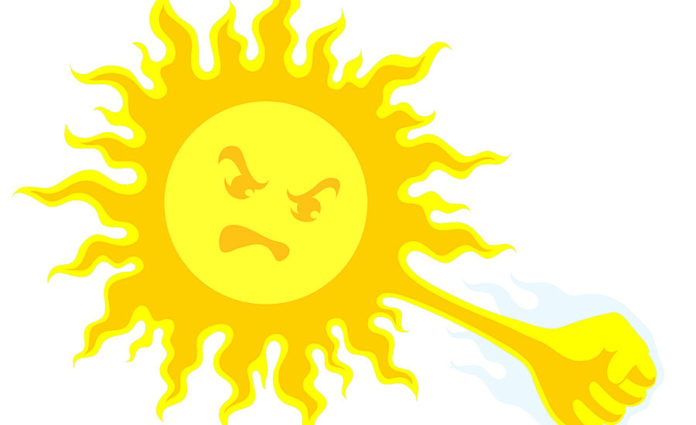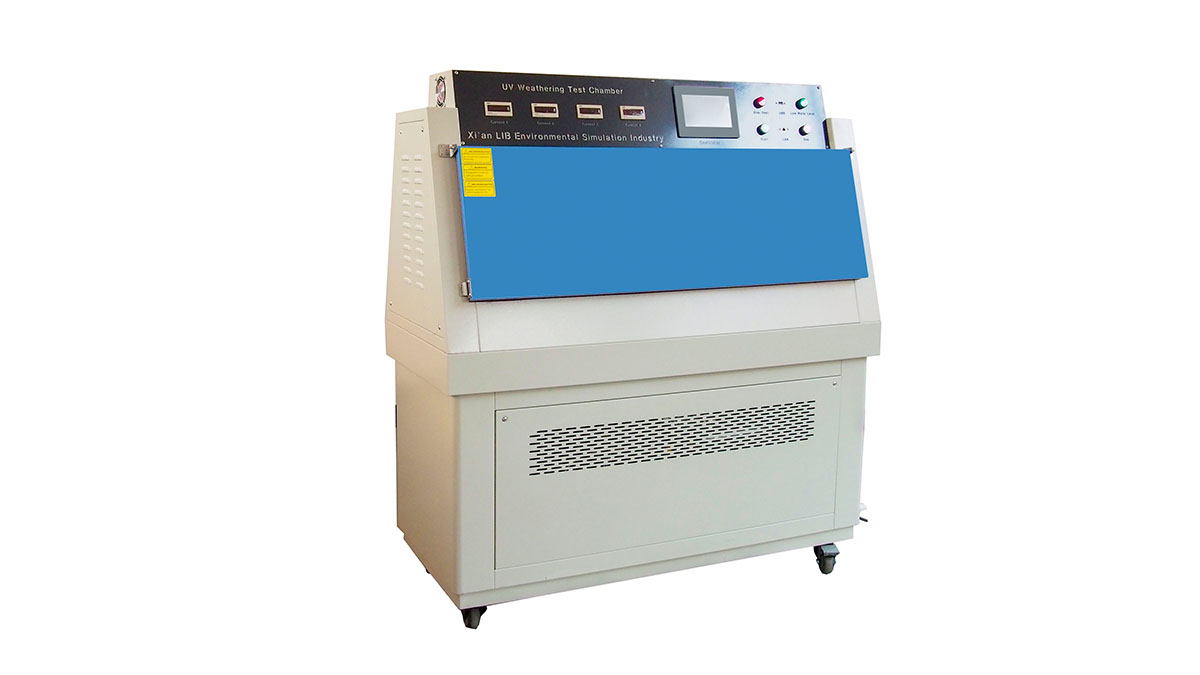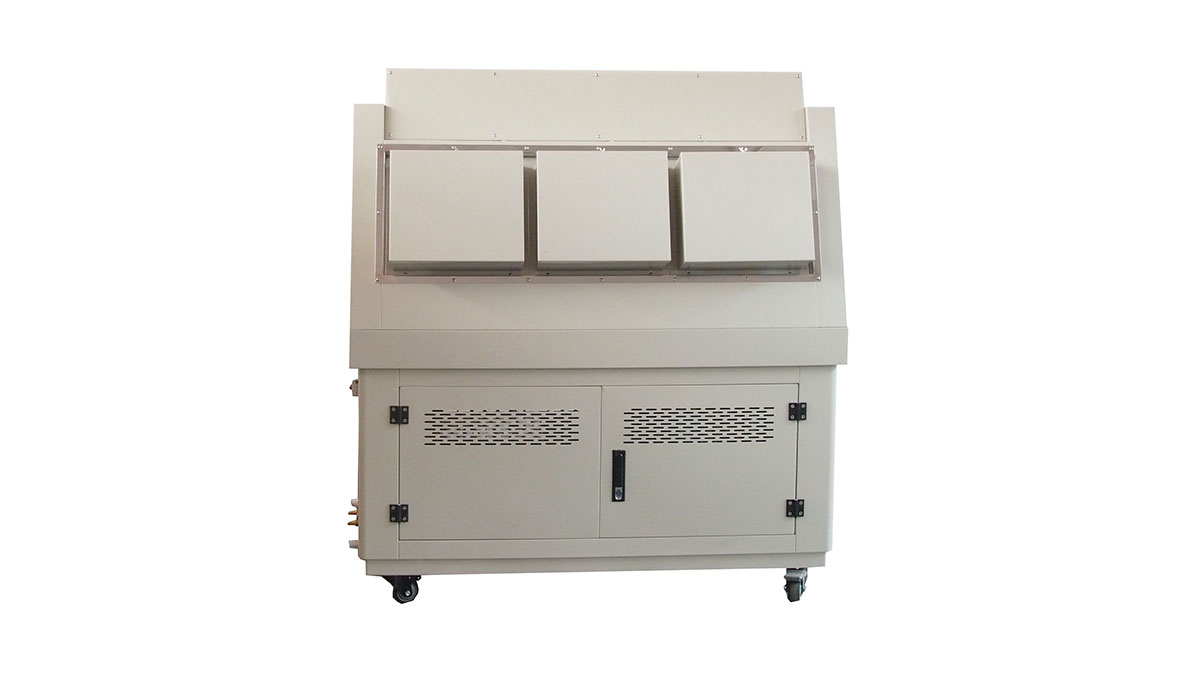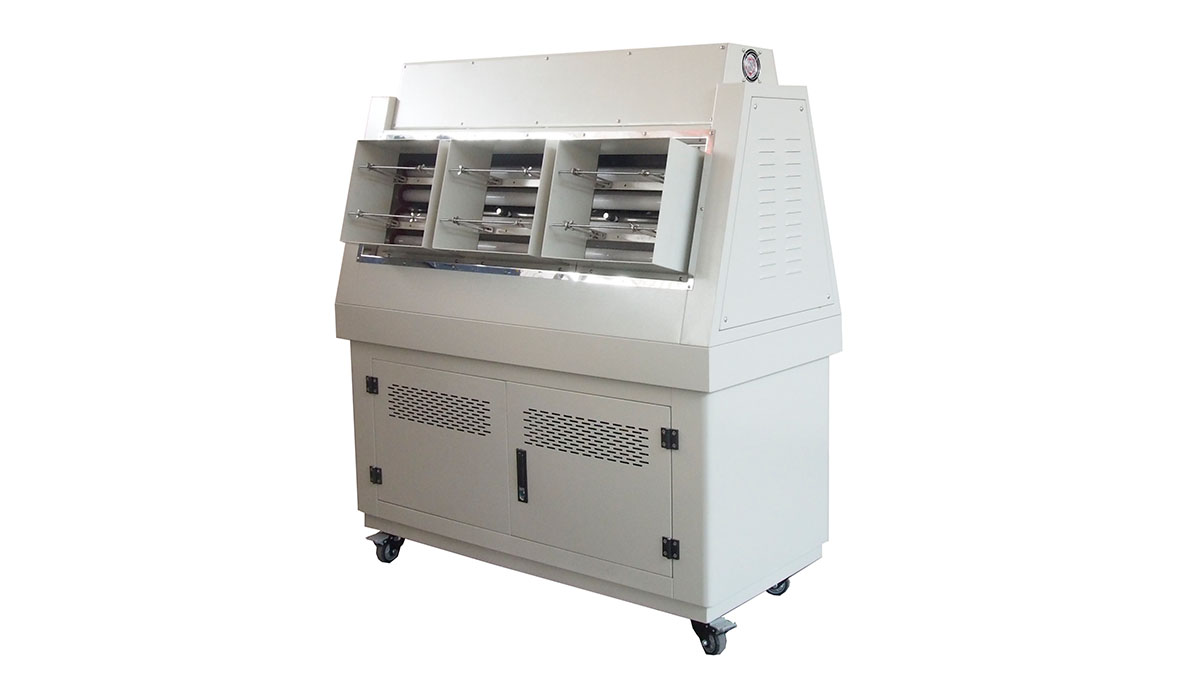When faced with a scorching hot day, we always apply sunscreen to protect ourselves from the harmful effects of ultraviolet rays and prevent skin aging. However, ultraviolet rays are not only harmful to humans but also pose a significant threat to products.
During processing, storage, or use, materials or products are subject to various external factors such as heat, light, oxygen, mechanical stress, ozone, harmful metal ions, and radiation, which cause physical or chemical changes within the material and deteriorate its performance, eventually rendering it useless. The types of damage caused by ultraviolet rays include fading, loss of luster, powdering, cracking, peeling, blurring, bubbling, embrittlement, decreased strength, and oxidation.

Assessing the weathering and durability of materials and products is crucial. UV weatherometer, a specialized equipment used to simulate the effects of ultraviolet radiation on material aging, have become indispensable tools for many industries due to their unique advantages.

UV weatherometer can accurately simulate the ultraviolet radiation in natural environments. They generate ultraviolet spectrum using fluorescent UV lamps and use three types of lamps to simulate different scenarios of ultraviolet light.
● UVB-313 lamp tube
The short-wave ultraviolet light emitted by this lamp tube is much stronger than the sun's ultraviolet light that usually falls on the earth's surface, thus accelerating material aging to the greatest extent possible. However, this lamp tube may cause unrealistic damage to some materials. UVB-313 lamp tube is mainly used for quality control and research and development, or testing for materials with very good weather resistance.
UVB-313 lamp with a filter It can simulate short-wave ultraviolet light in sunlight very well, i.e. the wavelength range from 365nm to the cut-off point of sunlight at 295nm, mainly used for outdoor product photoaging tests;
● UVA-351 lamp tube
UVA-351 lamp tube is mainly used to simulate the effects of sunlight passing through window glass indoors. It is very useful for testing materials indoors.
●UVA-340 lamp
It can simulate the short-wave ultraviolet light in the sunlight very well, that is, the wavelength range from 365nm to the sunlight cutoff point of 295nm, which is mainly used for the optical aging test of outdoor products.

At the same time, this accurate simulation capability of UV weatherometer makes the test results highly reliable and predictive. Not only that, UV weatherometer can also control the temperature between room temperature and 90 ° C, equipped with a spray head to simulate rainfall and other environmental factors. This provides a more realistic testing environment for products that are used in different regions and climates, such as outdoor building materials and aerospace components, and helps companies develop high-quality products that can adapt to a variety of harsh environments.
Because the intensity of the UV test conducted in the laboratory is greater than the intensity of outdoor light, the UV aging test can save the testing time of the staff and obtain the outdoor service life of the product in a short time. Compared with the traditional natural aging test method, the UV weatherometer greatly reduces the test time. In the natural environment, the aging process of the material may take months or even years to show significant changes, but in the UV weatherometer, it is possible to accelerate the aging process by increasing the intensity of ultraviolet radiation and controlling other environmental parameters, and obtain results similar to long-term natural aging in a short time. For companies, this means being able to bring new products to market faster, improve research and development efficiency, and reduce time costs.

Taking the plastics industry as an example, the research and development of new plastic materials requires evaluation of their weather resistance. Using UV weatherometer, aging data that would otherwise take several years can be completed in a few weeks, helping companies quickly determine the performance and scope of application of materials, and accelerate product development and market speed.
Advantage 3: Strong repeatability and comparability
UV weatherometer provide highly repeatable test conditions. Unlike other types of lamps, the UV lamp's spectrum does not change with time and has inherent spectral stability, which improves the repeatability of the test results and makes the test results more reliable. Spectral power distribution (SPD) does not change with lamp aging, even when used for up to 5,000 hours. This makes the test results of different batches of products comparable, which is convenient for enterprises to monitor and improve product quality.

Some General Standards for UV Weathering Tests
ISO 4892-3: Plastics - Laboratory light source exposure test methods - Part 3: Fluorescent UV lamps。
ASTM G-151: Standard test method for exposing nonmetallic materials to the accelerated test equipment using laboratory light sources.
ASTM G-154: Standard test method for exposing nonmetallic materials to UV from fluorescent equipment.
British Standard BS 2782: Part 5 540B method (laboratory light source exposure method).
SAE J2020: Accelerated exposure test of automotive exterior trim using fluorescent UV/condensation equipment.
ASTM D4587 Cycle 4: Fluorescent UV/condensation exposure procedure for coatings and related film.
In the electronics industry, coating protection materials for printed circuit boards (PCBS) require repeated testing to ensure their stability and reliability. The UV weatherometer can provide a stable test environment to ensure the consistency of each test result, so as to help enterprises screen out high-quality protective materials and improve the service life and stability of electronic products.
The above is the introduction of UV weatherometer, if you are interested, you can click https://www.libtest.com/products/uv-test-chamber/ to see more detailed specifications.